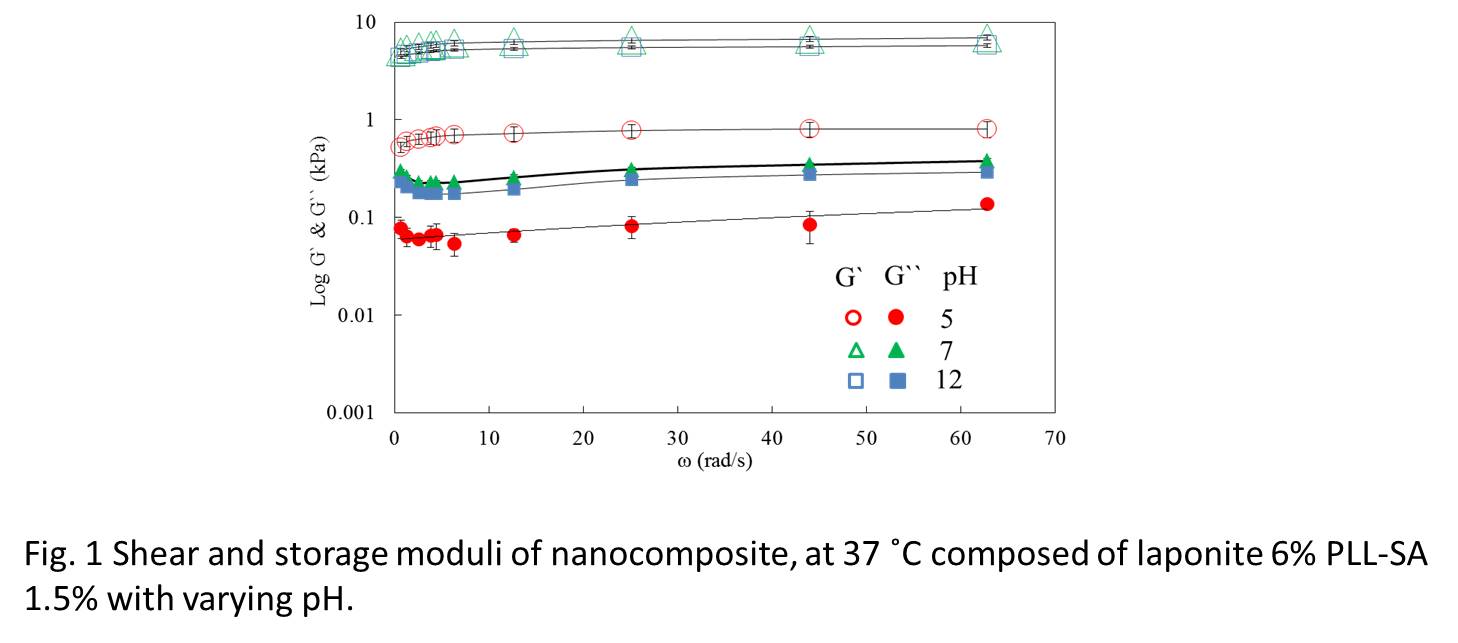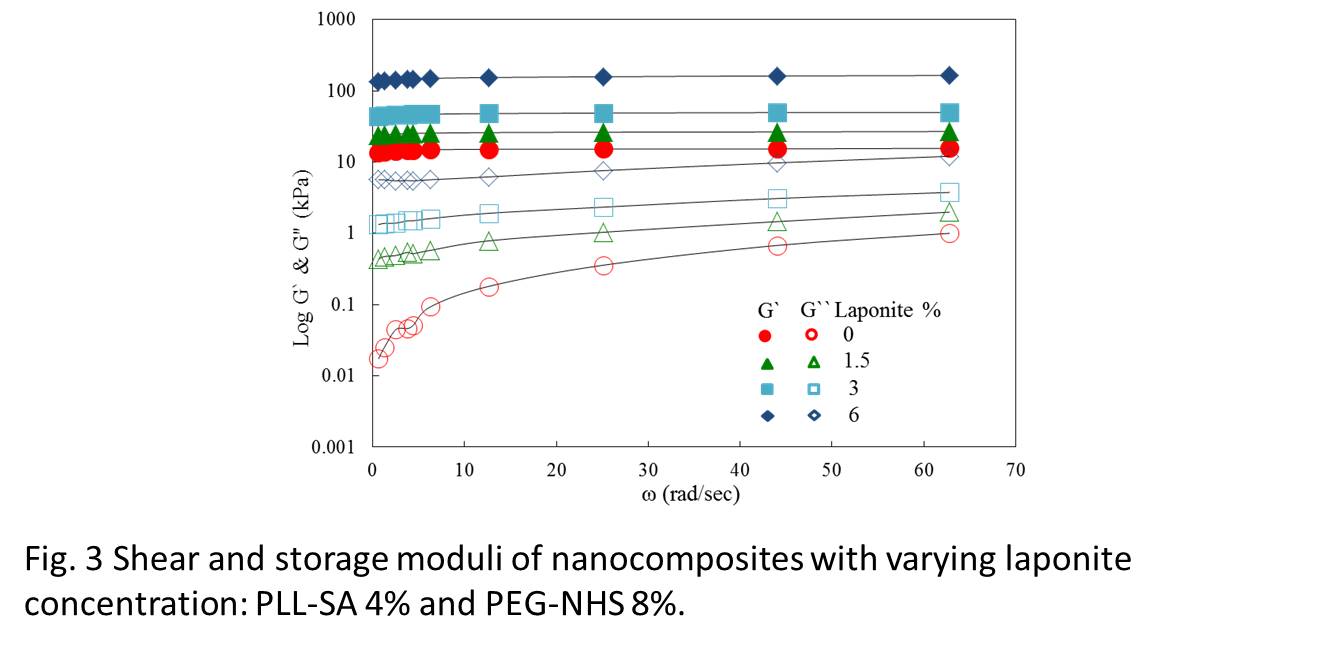Introduction: Engineered tissues are great substitutes for treating organ failures associated with disease, injury and degeneration[1]. In order to recapitulate the features existing in nature, various nanoceramics such as synthetic silicates[2] and nano-hydroxyapatite are used. In this context, injectable hydrogels are good choice for tissue engineering applications because of their unique biocompatibility, flexible synthetic strategies, and desirable physical characteristics. In this study we have focused on the development of new polymer–nanocomposites with novel inorganic/ organic network structures based on laponite (XLG) and succinated poly-L-lysine (PLL-SA). Our main goal of this study is to develop such a system in which cells can be cryopreserved by the use of PLL-SA which is potent non penetrating cryoprotectant[3] and after thawing this can be converted to gel by mixing with laponite. However this system is suitable for soft tissues but to achieve very high mechanical property chemical crosslinker need to be introduced. This was successfully attained by the incorporation of 4-arm polyethylene glycol with N-hydroxy succinimide ester (PEG-NHS). This bio-inspired material so formulated gives control over mechanical and degradation properties. Overall this study gives range of nanocomposites from physically crosslinked to chemically crosslinked system that can be used for various tissue engineering applications such as cell delivery, drug delivery, etc.
Material and Methods: PLL-SA was synthesised by reacting PLL aqueous solution with succinic anhydride in different mole ratios from 0-80% against NH2 group. This differently succinated PLL was then mixed with laponite in appropriate amounts to formulate the hydrogel. Chemically crosslinked hydrogels were obtained by mixing PEG-NHS in appropriate amounts in the above system. These hydrogels were analysed by XRD and ATR-IR. Dynamic mechanical analysis (DMA) was also carried out.
Results and Discussions: Unique interaction of the polymer and laponite leads to the development of smart hydrogels, which have different mechanical properties ranging from 500 Pa to 10 kPa (Fig.1) with change in pH.

They exhibit thixotropic property through autonomic reconstruction of crosslinks across damaged interface (Fig.2).

Incorporation of PEG-NHS to the above system renders nanocomposite with range of mechanical property. When laponite concentration was varied, storage modulus could be tuned from 10 kPa to over 150 kPa (Fig.3).

Beautiful interplay of charges and physical–chemical interactions gives broad range of nanocomposite with tailorable mechanical and degradation properties. The biomedical relevance of this system can be seen through the cell adhesion and proliferation on their surface.
Conclusion: This system can be used as an injectable hydrogel, that can be employed with minimally applied pressure due to thixotropic property. The broad range of mechanical properties of our nanocomposite could be useful for application of these materials as cell scaffolds because different cell types may have different requirements for mechanical strength. For example, 1 kPa may be suitable for neuronal stem cells, whereas 10 kPa may be suitable for muscle cells and 100 kPa may be suitable for bone cells[4]. Thus this system can be a promising prospect for tissue engineering applications.
References:
[1] Khademhosseini A. et al., Biomaterials, 28:5087-5092, 2007
[2] Gharwar A.K. et al., Acta Biomater. 7:568-577, 2011
[3] Matsumura K. et al., Biomaterials, 30:4842-4849, 2009
[4] Ram SE. et al., Cell, 126:645–647, 2006